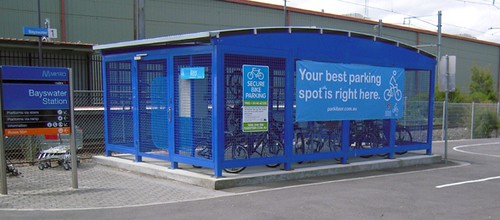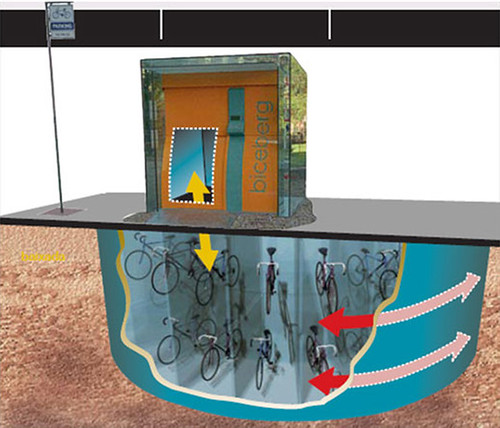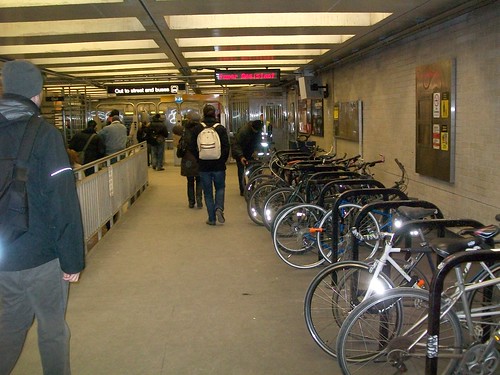Bicycling Magazine's list of the Top 50 Bicycling Cities in the US
-- "The Best Bike Cities in America"
The criteria:
Our ranking system is out of 100 points divided into four categories, each weighted based on their importance. Safety tops the list and is ranked out of 40 points. Eight to 80 friendliness (how accessible the city is to riders of all ages) came next out of 30 points. Then energy—a measure of the political climate in regards to bikes—out of 20 points. Finally, culture—the shops, routes, and attributes that make each city a great place to ride—was ranked out of 10 points. For a more detailed look on how we ranked each city, see "How we ranked America's best bike cities."I like the article's discussion of each community. There are ideas and such to pick up from most any other place. Although there is no question that there is a lot of "subjectivity" to the the analysis. From the article:
One takeaway we can’t stop thinking about is that there is no perfect American city for cycling. Our networks are still fragmented. Some cities have nothing besides paint-on-pavement lanes. Many socioeconomically disadvantaged communities lack any bike infrastructure at all. And we don’t have any one organization that collects comprehensive data on cycling injuries. America has a lot of work to do. But a few cities are leading the way, and seeing the work they're putting in makes us hopeful that other areas will soon follow suit.
Seattle is #1. ("Why Seattle is the best bike city in America.") The article calls attention to engaged political leaders (not just one or two people as is typical in many cities), a rigorous process for identifying unsafe intersections and road conditions, that more than one-third of the population regularly bikes--but not for bike commuting, protected bike lanes, a high proportion of women riding (we have that in DC too), committed planners, bike businesses based there, and the community and culture of cyclists.
Although the article lauds dockless bike share and I bet in reality it's not highly used.
Political culture and Vancouver, BC. Hub Cycling, the bicycling advocacy group for Greater Vancouver BC has a nice set of webpages on the positions of various candidates for office in the cities and towns around Vancouver.
-- "Vote to Bike"
-- #VoteToBike
Not everyone participates ("Many high-profile Vancouver mayoral hopefuls take a pass on HUB Cycling's Vote Bike survey of local candidates ," Straight). But as the webpage says:
Every candidate for public office should have a transportation platform.BONUS: THE TWO MOST IMPORTANT THINGS THAT COULD BE DONE TO INCREASE CYCLING FOR TRANSPORTATION THAT NO ONE (IN THE US) IS DOING. Bicycling Magazine and other outlets need to push better practice forward in other ways.
1. Have a program that is either free or very low cost where people can borrow a bike, helmet, and lock for a few weeks to try it out ("Bike share and sustainable bike share systems: sometimes other programs can have more effect for less cost").
Like the various programs in the UK, called "Cycle to Loan schemes" such as in Hounslow borough in London. The London Cyclist Campaign is a lead organizer of such programs, Urban Cycle Loan, which were written about in CityLab, "How Cycling Is Becoming More Equitable in London."
This way people don't have to spend hundreds of dollars to try out biking without being sure they will stick with it.
2. Create a city-wide and metropolitan-wide system of protected bike parking that is easy to use*. The Parkiteer system in Victoria State/Melbourne, Australia is the model ("Bike to Work Day as an opportunity to assess the state of bicycle planning: Part 2, building a network of bike facilities at the regional scale").
Centered on Melbourne, the Parkiteer bike parking is a network of 90+ secure bicycle parking cages at railroad and transit stations. While many European, Asian, and South American cities provide similar types of bike cages, Parkiteer is different in that each cage is a node in a common network, rather than each a free standing facility with different membership and entry access systems.

Bayswater Station, Melbourne, Parkiteer Bicycle Parking Cage
I am suggesting the creation of a networked secure bike parking system covering the DC and Baltimore metropolitan areas, one that isn't transit agency/jurisdiction specific, but functional without respect to agency or jurisdiction (like how you can use the SmarTrip/CharmCard across transit agencies, even though technically, the card program is run by WMATA), including:
The way the Parkiteer program works is that "members" pay a one-time $50 fee for a key fob which allows them to open the access control device. They can use any of the Parkiteer sites across the network. There is no daily use fee for parking.
Ideally, a wide variety of high quality parking options would be employed, not just the "cages" used in the Parkiteer program
.

The Biceberg underground bicycle parking system works with an above-ground kiosk.

At the Logan Square CTA station in Chicago, protected bike parking is available within the station, behind the fare gates, in interstitial space.
Note that the Biceberg has the capacity of 23, 46, 69, or 92 bikes, depending on the underground configuration (each unit of 23 equals the cubic feet of one parking space), while the bike cages used in the Parkiteer program have a capacity of 30. Plus, it seems that the Parkiteer program's cages are pretty expensive.
In any case there are a variety of spaces (indoors, garages, underground options, etc.) that should be utilized for such a program.
=======
* There are some exceptions with bike parking, but they don't operate on the scale or approach of Parkiteer. Santa Ana, California has a few bike shelters in its Downtown that are accessed by paying members. Indianapolis had a similar system called Indiana Bike Port but the program has been discontinued.
In the SF Bay area and in Los Angeles County the transit agencies have a number of bike hubs, although membership is facility specific.
Labels: bicycle and pedestrian planning, integrated public realm framework, sustainable mobility platform, urban design/placemaking




4 Comments:
Good local representation.
what do you mean?
Because I claim to be a national blogger, I didn't want to focus on DC's rank, which is #11.
Yes and Arlington 17, Alexandria 25, and going farther Richmond 34.
Ah, sorry for misunderstanding.
Post a Comment
<< Home